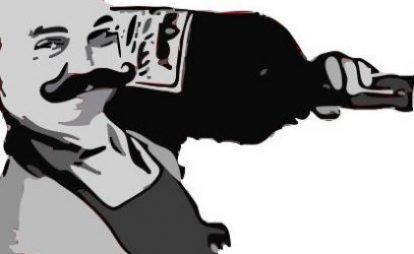Fine Wine is bucking the overall trend of economic downturn, I read somewhere recently. Well, I’d like to be a little bit more cautious personally, not only because the arguments are not entirely convincing, but the news we came across in the past week and selected for the latest edition of the JollyCellarMaster Weekly. But do not despair! There is also some positive news if you read on:
The Road Ahead, Justice in France, and Winery Valuations
Taking Inventory
It has become a tradition. Now already in its sixth edition, Hochschule Geisenheim University has once more reached out to experts from all over the world from the entire value chain of the wine industry to find out about what’s moving the sector. The result is the ProWein Business Reports 2022 that has just been published.
“Almost 2,500 international experts from 47 countries shared their insider knowledge with us again this year,” emphasizes Prof. Simone Loose, Head of the Institute for Wine and Beverage Management at Geisenheim University, highlighting the particular importance of the global industry barometer. “The industry faces major challenges due to cost increases and the disruption of supply chains. The interesting thing about it: The industry leaders are reacting proactively to the economic crisis by opening up new markets with their products and reacting innovatively to the needs of retailers and consumers”. This includes alternative wine packaging and wines with little or no alcohol.
Wine retailers, exporters, importers, and representatives from the catering and hotel industries are among the participants, as are wine producers from the most important wine-growing nations in the old and new world.
The unique time series of the ProWein market barometer of the international wine industry that has been going on since 2017 is continued in this report, which measures the significance of the problems the industry is facing in the current economic climate.
Rising costs and disruptions to the supply chain top the list of threats and challenges facing the wine industry this year as well. However, these elements are now impacting the industry even more. Additionally, wine sales may decrease as a result of the economic slowdown.
In 2021, higher energy demand and rising energy prices were already a result of the global economic recovery following the Covid-19 virus. Prices have often more than doubled in many parts of Europe compared to 2020 as a result of the war in Ukraine and the sudden drop in energy supply in 2022. The producers are much more affected than the traders because they use more energy.
The majority of businesses will still be able to make up for the higher energy costs with lower but still positive profits. The majority of manufacturers are raising the prices of their products to absorb at least some of the increased costs as a result of rising energy costs. The businesses are aware that consumers may be reluctant to purchase if prices rise. Companies optimize their processes to save energy, which is the second most common measure.
Transport issues and disruptions to the supply chain had an impact on nearly all producers. A significant portion of the supply issues were successfully buffered by wine producers. Trade suffered significantly less as a result. From the perspective of the business, transportation and availability issues will continue to be a major obstacle.
There was also an aspect of false security going at the end of 2021, as businesses had high hopes going into last year. Tradespeople and producers were hoping that the negative effects of Covid-19 would pass, but these hopes at best only partially realized if at all. As a result, the industry is wary of the future.
Not a bright picture, but an honest reflection of the status quo. Let’s hope that in the end things this time turn out better than expected.
After all, at the presentation of the ProWein Business Report Professor Loose said that we must not underestimate the fact that the survey took place in November, while since then the overall economic prospect has brightened significantly, so that the results could be more positive today. Fingers crossed!
Vive La Justice
Last year in July, we brought you the story of a wine merchant / owner of a chateau in Bordeaux who together with a gang of more than 20 people tried to pull off a large-scale scam using fake Bordeaux wines. The criminals bought cheap wine from other French regions and countries including Spain, before bottling it at a secret location under the cover of darkness and adding self-printed Bordeaux châteaux labels. Then the fake bottles were distributed through intermediaries that included businesses and even pensioners, on an operation of industrial scale since the group was trying to sell large quantities of apparent Medoc wines at a discount to supermarkets.
Last week, five wine traffickers were sentenced at the criminal court of Bordeaux for importing the equivalent of 4.6 million bottles of Spanish table wine which they then resold as French wine, with two receiving prison sentences, even though their lawyers denounced disproportionate fines for their clients, since the five were apparently only pawns in a much larger scheme.
The two main defendants, Jean-Sébastien Laflèche, broker in Saint-Loubès and Michel Gilin, former salesman of Celliers vinicoles du Blayais (CVB), were sentenced to two years in prison, but can be served as house arrest with electronic bracelet, plus a total of 453,000 euros in fines or confiscation of property as well as a ban on exercising any profession or activity in the wine trade for five years. Furthermore, two other defendants were each given an eight-month suspended prison sentence and a fine of 20,000 euros. In addition to fines and personal confiscations, the five defendants were also sentenced to a tax penalty of a total of 670,000 euros for the irregular circulation of goods.
The lawyers, according to French outlet France Bleu, insisted on the unfairness of the prosecution and maintained that the real culprits remained untouched, also because there was no true will to change a system that benefits those that make large profits. Intriguing.
The dent in the curve
It is always interesting to witness the apparent lack of interest in the business side of wine as we constantly get lost in admiring its beauty and the romance we prefer to associate with its making. Yet, the reality is decisively less rosy and, in the end, it is not much more than that, a business. All the more interesting is the great post by Inumeridelvino.it that relates to the valuation of listed wineries. The data was collected on January 20, 2023 and refers to the valuation multiples for the year 2023 and 2024, therefore using the estimates of financial analysts for the next two years.
The sample was reviewed by separating Champagne companies, non-European companies and European ones to provide a more homogeneous view given that non-European companies are much larger and more profitable. As a result, they have a bigger impact on valuation multiples.
Above we read about the challenges of the current economic situation, so it shouldn’t come as a big surprise that the results are significantly worse than last year. On average, valuations have dropped by approximately 10%. For example, the weighted average EV/Sales multiple of international companies has dropped from 5.6 to 5 times, and the price/earnings ratio ranges from 20 to 22 times. European companies seem to be slightly less impacted: for instance, the European companies in the sample are Masi, Italian Wine Brands, Advini and Schloss Wachenheim with an average multiple of turnover is 1.2, which is slightly skewed though since it is substantially higher for Masi compared to the other companies with much lower margins. That is in part due to company specific changes (new capital by additional shareholder) for Masi, so the realistic number might be somewhere closer to 1.
Outside of Europe the picture is even gloomier as Non-European companies experienced a less positive year as the market values have dropped year-on-year for all sampled companies with the exception of Constellation Brands and TWE, despite expected earnings to rise in 2023.
There is also data on the Champagne companies but the author himself said that the numbers should be taken with a grain of salt, so we will not get in to this further at this point, but I highly recommend giving this post and the other interesting stuff you’ll find there a closer look.
—
And that’s all for the week but if you have an interesting story to tell or simply want to chat about wine as a guest on the Podcast, connect on Twitter or drop me a line. And if you want to stay in the loop about things happening at the JollyCellarMaster and the world of wine, make sure you sign up to our newsletter.
—
Disclaimer: As always, I’d like to be completely transparent about affiliations, conflicts of interest, my expressed views and liability: Like anywhere else on this website, the views and opinions expressed are solely those of the original authors and other contributors. The material information contained on this website is for general information purposes only. I endeavour to keep this information correct and up-to-date, I do not accept any liability for any falls in accurate or incomplete information or damages arising from technical issues as well as damages arising from clicking on or relying on third-party links. I am not responsible for outside links and information is contained in this article nor does it contain any referrals or affiliations with any of the producers or companies mentioned. As I said, the opinions my own, no liability, just thought it would be important to make this clear. Thanks!




